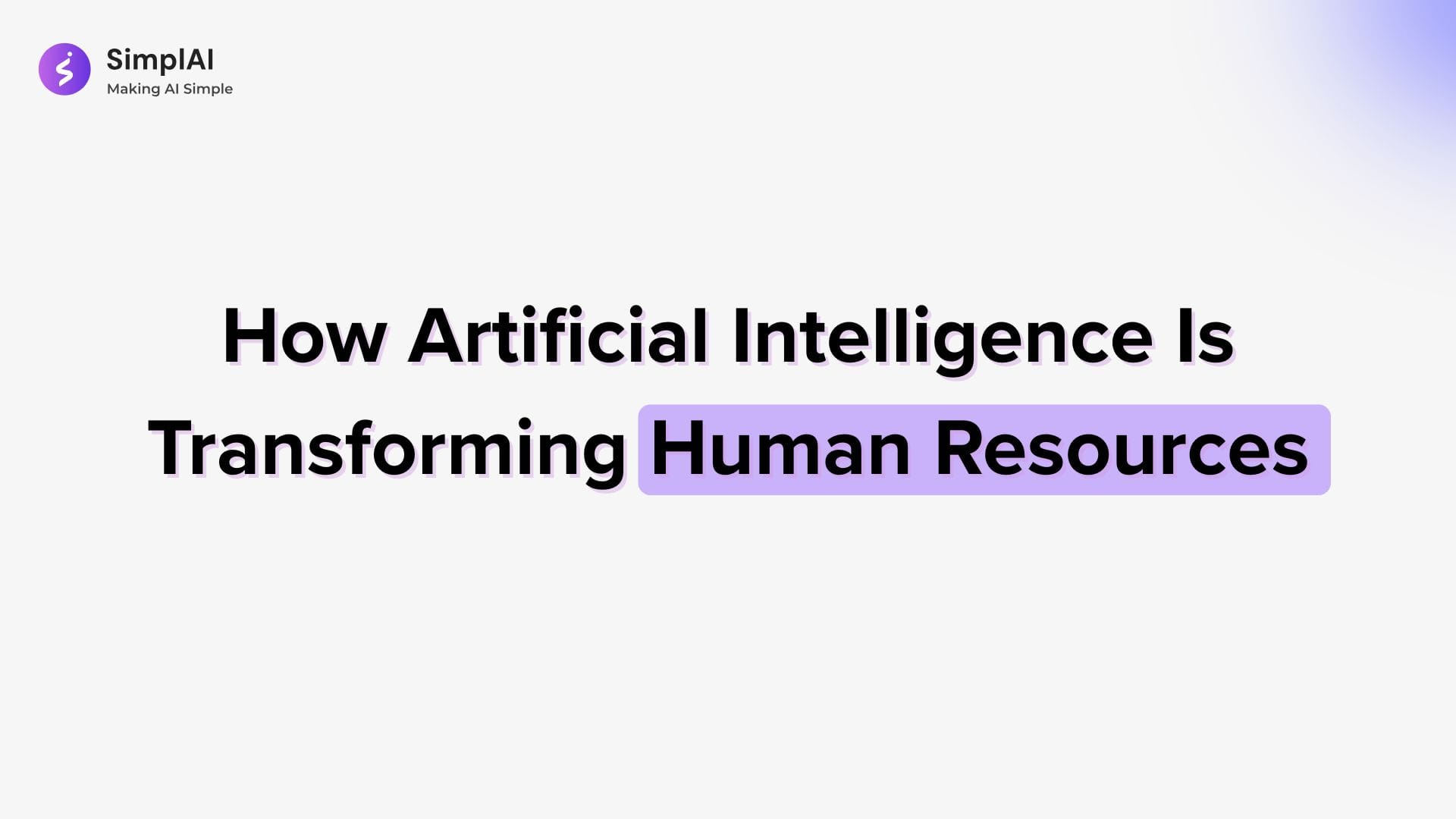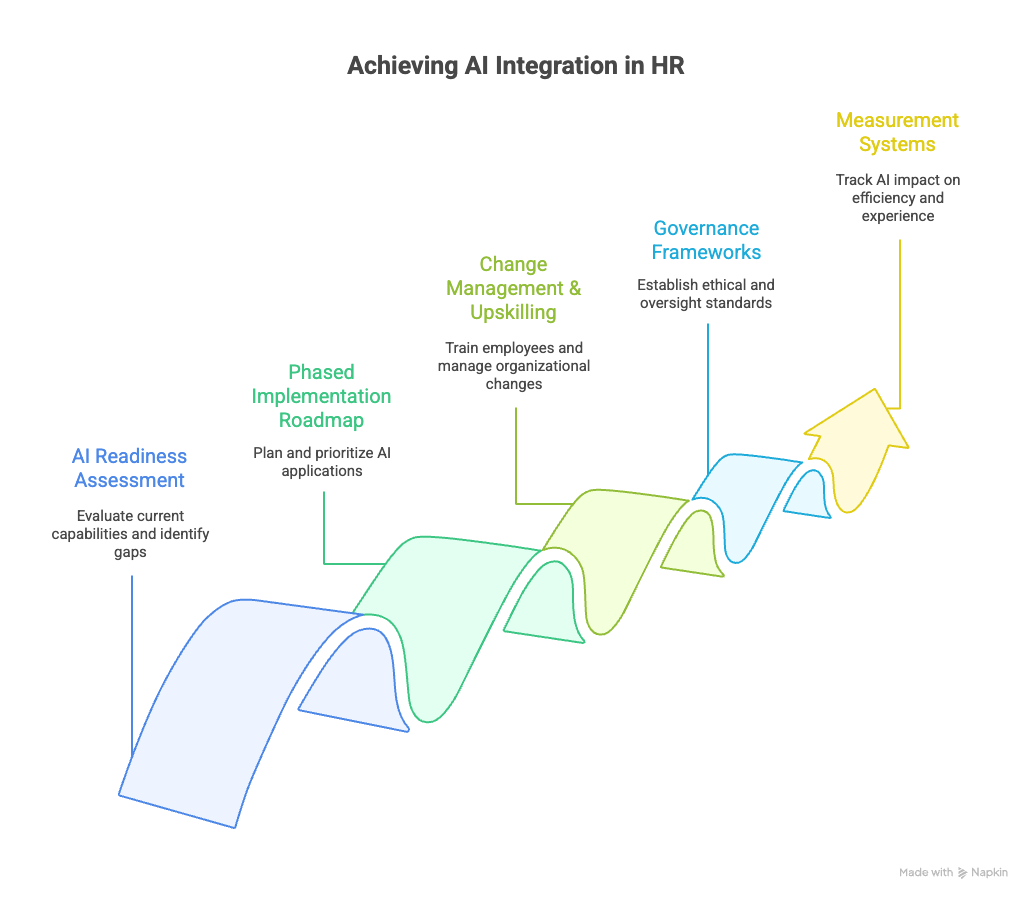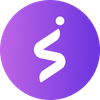How Artificial Intelligence Is Transforming Human Resources

Artificial Intelligence in Human Resources has evolved from a futuristic concept to a strategic imperative that's reshaping how organizations manage their most valuable asset: people. Today's HR leaders face a unique opportunity to leverage AI technologies that can reduce routine workloads, surface predictive insights, personalize employee experiences, and strengthen compliance—all while maintaining human oversight at the center of people decisions.
This transformation is powered by advances in natural language processing, machine learning, generative AI, and computer vision. The most successful organizations are those that thoughtfully combine these technologies with robust governance frameworks, comprehensive change management, and strategic upskilling initiatives.
The Technology Foundation: Core AI Capabilities in HR
Natural Language Processing & Conversational Intelligence
Modern NLP systems do far more than simple keyword matching. They understand context, interpret intent, and deliver personalized responses based on factors like employee location, tenure, role, and specific circumstances. This capability transforms basic FAQ systems into dynamic, intelligent support channels that can handle complex policy questions, provide tailored guidance, and even detect sentiment patterns in employee communications.
HR chatbots powered by advanced NLP can now comprehend nuanced requests, maintain conversation context, and escalate appropriately when human judgment is needed. They're also enabling sentiment analysis across feedback channels, allowing organizations to identify engagement risks before they become retention problems.
Machine Learning for Workforce Intelligence
Machine learning algorithms excel at finding patterns in complex HR data sets. By analyzing historical information—performance ratings, engagement surveys, career progression paths, compensation trends, and training completion rates—these systems generate forward-looking insights that inform strategic decisions.
Predictive models can identify employees at risk of leaving, surface high-potential talent earlier in their careers, and recommend personalized development pathways. These systems continuously improve their accuracy as they process new data, becoming more precise over time without requiring manual retraining or reconfiguration.
Computer Vision Applications
While requiring careful ethical consideration, computer vision is finding controlled applications in HR. Legitimate uses include secure identity verification, workplace safety monitoring, and anonymized space utilization analysis. Some organizations are exploring structured interview augmentation through analysis of vocal patterns and visual cues, though this requires transparent communication and strict bias monitoring.
Generative AI Revolution
Generative AI represents the newest frontier, moving beyond analysis into active content creation. HR professionals are using these tools to draft personalized performance feedback, create customized learning materials, simulate interview practice sessions, and generate policy explanations tailored to specific employee situations and comprehension levels.
Current Adoption Landscape
Accelerating Implementation with Persistent Challenges
AI adoption in HR is experiencing rapid growth, though implementation remains uneven across organizations. Recent research indicates that nearly half of HR professionals now consider AI a more urgent priority than they did just one year ago. At the employee level, usage has dramatically increased—the percentage of U.S. workers using AI tools in their roles at least a few times per year jumped from 21% to 40% over two years, with daily usage doubling in recent months.
However, HR departments often lag behind other functions in deep integration of generative AI capabilities. While many organizations recognize the potential, only a minority have successfully embedded GenAI into their standard workflows, with most still in exploratory phases.
Employee Expectations and Acceptance
Today's workforce increasingly expects personalized, AI-driven experiences. Research suggests that 80% of employees want AI-powered career development plans, and tools that provide individualized learning recommendations or benefits guidance generally receive positive reception.
However, employee comfort levels vary significantly based on application. While employees welcome AI assistance for routine tasks and self-service capabilities, concerns rise when AI touches sensitive areas like performance evaluation, promotion decisions, or workplace monitoring. This underscores the critical importance of transparency and maintaining human oversight in all people-related decisions.
The Skills Gap Challenge
Despite widespread tool availability, a significant portion of the workforce isn't yet equipped to maximize AI benefits. While AI tools are present in 93% of U.S. workplaces, only about half of employees have received adequate training to use them effectively—revealing a critical upskilling gap that organizations must address to realize their AI investments.
AI Applications Across the Employee Journey
Intelligent Talent Acquisition
AI is revolutionizing recruiting by enabling more efficient and effective candidate identification, assessment, and selection. Modern systems go beyond simple resume parsing to perform sophisticated skill mapping, cultural fit analysis, and potential assessment. These capabilities can reduce time-to-hire by up to 50% while improving the quality of candidate matches.
Advanced assessment platforms evaluate not just technical qualifications but also adaptability, leadership potential, and growth trajectory. When properly implemented with bias mitigation frameworks, AI can help reduce unconscious bias by focusing evaluation on job-relevant attributes rather than demographic characteristics.
Personalized Learning and Development
AI-driven learning systems create customized development pathways by analyzing current competencies, career aspirations, learning preferences, and organizational needs. These personalized experiences accelerate skill acquisition, improve engagement rates, and ensure that individual growth aligns with business objectives.
The technology can recommend specific courses, projects, mentoring relationships, or stretch assignments based on an employee's unique profile and goals. This level of personalization was previously impossible at scale but is now becoming a standard expectation among high-performing employees.
Enhanced Employee Experience
Conversational AI provides immediate, 24/7 access to HR support, answering questions about benefits, policies, career guidance, and procedural requirements. This reduces friction in the employee experience while allowing HR professionals to focus on higher-value interactions.
Proactive AI systems can identify disengagement patterns through various signals—decreased collaboration, changed communication patterns, or survey responses—and suggest interventions before issues escalate. Real-time sentiment analysis across feedback channels helps HR teams stay ahead of emerging challenges.
Data-Driven Performance Management
AI is transforming performance management from periodic, subjective reviews to continuous, data-informed development conversations. By synthesizing feedback from multiple sources, project outcomes, peer interactions, and skill assessments, AI surfaces comprehensive insights about employee strengths and development opportunities.
This approach creates more transparent, fair, and actionable performance discussions while helping managers identify high-potential employees earlier in their careers. The result is a more engaging performance culture that focuses on growth rather than evaluation.
Strategic Business Impact
Operational Excellence
Automation of high-volume, routine tasks—resume screening, interview scheduling, policy lookups, benefits enrollment support—liberates HR professionals to engage in strategic initiatives. Organizations implementing comprehensive AI solutions report significant productivity gains, cost reductions, and faster decision cycles.
The efficiency gains extend beyond HR teams to managers and employees, who can access information and complete tasks without waiting for human assistance. This self-service capability improves satisfaction while reducing operational overhead.
Intelligent Decision-Making
Advanced analytics reveal non-obvious correlations and patterns that inform strategic talent decisions. AI can identify which training programs correlate with promotion success, predict which employees are likely to excel in leadership roles, or determine optimal compensation strategies for retention.
These insights enable more proactive talent management, better resource allocation, and strategic workforce planning that aligns with business objectives. The predictive capabilities help organizations anticipate challenges and opportunities rather than simply responding to them.
Competitive Advantage in Talent
Organizations that effectively implement AI in HR create differentiated employee experiences that attract and retain top talent. Personalized development opportunities, responsive support systems, and fair, transparent evaluation processes become competitive advantages in tight talent markets.
The combination of efficiency gains and enhanced employee experience creates a positive cycle: better HR service delivery improves employee satisfaction, which enhances employer brand and makes talent acquisition more effective.
Ethics, Governance, and Compliance
Responsible AI Implementation
Successful AI implementation in HR requires robust governance frameworks that ensure human oversight remains central to all people decisions. Recent guidance from labor authorities emphasizes the importance of maintaining human involvement in employment decisions, establishing clear governance structures, and conducting regular audits for discriminatory outcomes.
Organizations must implement transparent processes that allow employees to understand how AI influences decisions affecting them, provide mechanisms for appeal or review, and maintain the ability to opt out of AI-driven processes when appropriate.
Emerging Regulatory Landscape
The regulatory environment for AI in employment is rapidly evolving. Colorado's AI Act, effective February 1, 2026, represents one of the first comprehensive U.S. laws governing high-risk AI systems, including stringent requirements for preventing algorithmic discrimination and formal care obligations for AI developers and deployers.
Organizations should anticipate similar regulatory developments and proactively build compliance capabilities into their AI HR systems. This includes maintaining audit trails, conducting bias testing, and establishing processes for regulatory reporting and employee notification.
Bias Prevention and Ethical Guardrails
Best practices for ethical AI in HR include defining clear principles for AI use, conducting regular cross-functional audits, ensuring training data representativeness, and maintaining transparency about decision-making processes. Regular bias testing should examine outcomes across protected categories and identify any discriminatory patterns.
The goal is not to eliminate all AI involvement in HR decisions but to ensure that AI augments human judgment in fair, transparent, and beneficial ways. This requires ongoing vigilance and continuous improvement of both technology and processes.
Implementation Strategy for HR Leaders
Phase 1: Assessment and Planning
Begin with a comprehensive audit of current HR processes, data quality, system integration capabilities, and organizational pain points. Define clear success metrics that encompass both quantitative measures (time saved, cost reduced, accuracy improved) and qualitative outcomes (employee satisfaction, perceived fairness, manager effectiveness).
This assessment should also evaluate organizational readiness for change, including leadership support, employee sentiment toward AI, and technical infrastructure capabilities.
Phase 2: Strategic Partner Selection
Evaluate potential technology partners based on technical capabilities, bias mitigation practices, transparency, ongoing support quality, and alignment with organizational values. Consider whether integrated platforms or best-of-breed solutions better match your specific needs and technical environment.
Due diligence should include reference checks with similar organizations, proof-of-concept testing, and careful review of data handling and security practices.
Phase 3: Pilot Implementation
Start with narrowly scoped, high-impact pilot projects such as AI-powered self-service chatbots, predictive attrition alerts, or resume screening for high-volume roles. These pilots serve multiple purposes: building internal advocacy, measuring concrete outcomes, refining processes, and identifying challenges before broader rollout.
Successful pilots should demonstrate clear value while providing learning opportunities that inform larger-scale implementation.
Phase 4: Change Management and Capability Building
Address the capability gap through comprehensive training programs for HR staff, managers, and employees. AI literacy reduces resistance and increases adoption while ensuring that humans can effectively collaborate with AI systems.
Change management should address concerns transparently, communicate benefits clearly, and provide ongoing support as people adapt to new ways of working.
Phase 5: Governance and Continuous Improvement
Establish clear guidelines for when AI recommendations require human review, maintain comprehensive audit trails, and create channels for feedback and redress. Embed ethics reviews into the lifecycle of any AI system affecting employee experiences or decisions.
Continuous improvement should include regular performance assessment, bias monitoring, and refinement based on user feedback and changing organizational needs.
SimplAI's HR Policy Advisor Agent
Addressing the Policy Complexity Challenge
The HR Policy Advisor Agent represents a purpose-built solution for one of HR's most persistent challenges: providing accurate, timely, and consistent policy guidance across complex organizational environments. This intelligent assistant combines real-time policy analysis with compliance monitoring to reduce friction and improve employee confidence in HR processes.
Target Beneficiaries
HR Teams and Managers gain immediate access to accurate policy information, freeing up 10-15 hours per week for strategic initiatives rather than routine policy interpretation and explanation.
Employees receive instant clarity on benefits, conduct standards, leave policies, and regulatory entitlements through natural language interactions that provide personalized, context-aware guidance.
Compliance Officers maintain audit readiness through proactive monitoring of regulatory changes and policy drift, with early warning systems for potential compliance risks.
Organizations ensure consistent policy communication while reducing governance risk and improving overall operational efficiency.
Core Capabilities
Instant Policy Resolution: Natural language queries return clear, actionable answers drawn from internal documents, policies, and frequently asked questions, with average response times under 3 seconds.
Proactive Compliance Monitoring: Continuous monitoring of external legal databases and internal policy versions to identify potential risks and recommend updates before compliance issues arise.
Intelligent Benefits Guidance: Complex benefits information (health insurance, retirement plans, leave policies) explained in accessible language with personalized recommendations based on employee circumstances.
Regulatory and Conduct Support: Clear guidance on workplace safety, ethics, and disciplinary frameworks with context-aware responses that consider specific situations and organizational roles.
Continuous Learning: Analysis of recurring question patterns to identify policy gaps, suggest improvements, and recommend proactive communications to address common concerns.
Measurable Business Impact
The HR Policy Advisor Agent delivers quantifiable results:
- 80% self-service resolution rate for policy-related inquiries
- 100% policy coverage with configurable scope and extensibility
- Average 3-second response time for standard queries
- 70% reduction in routine policy inquiry handling by HR staff
Strategic Value Proposition
By automating routine policy inquiries, the agent enables HR teams to focus on culture development, strategic talent initiatives, and complex human-centered challenges that require empathy, creativity, and strategic thinking. The result is enhanced HR efficiency, improved compliance posture, increased employee trust, and reduced operational overhead.
This solution embodies the augmentation principle that defines successful AI implementation: artificial intelligence handles routine complexity while human professionals focus on strategic value creation and relationship building.
Future Directions and Emerging Trends
Deep Generative AI Integration
The next wave of AI in HR will feature seamless integration of generative capabilities into everyday workflows. We can expect to see AI automatically drafting personalized performance reviews, creating customized development plans, generating realistic training scenarios, and providing simulated coaching experiences tailored to individual needs and learning styles.
Convergent Technology Ecosystems
AI will increasingly integrate with other emerging technologies to create comprehensive employee experience platforms. Virtual and augmented reality will enhance onboarding and training experiences, blockchain will enable verifiable credential systems, and advanced analytics will support sophisticated workforce scenario planning and strategic decision-making.
Regulatory-Driven Trust Infrastructure
As regulations like Colorado's AI Act take effect and global frameworks mature, organizations that proactively build compliance capabilities will gain competitive advantages. Trust infrastructure—including transparency tools, bias monitoring systems, and employee rights frameworks—will become standard components of HR technology stacks.
Strategic Recommendations and Next Steps
AI in HR represents an opportunity to augment human insight rather than replace it. Organizations that approach implementation thoughtfully—balancing innovation velocity with ethical guardrails, investing in comprehensive upskilling, and embedding governance into their processes—will unlock disproportionate value through reduced costs, improved talent outcomes, enhanced employee engagement, and stronger compliance postures.
Success requires viewing AI as a strategic capability that enhances human potential rather than a cost-reduction tool that replaces human judgment. The organizations that maintain this perspective while executing disciplined implementation strategies will create sustainable competitive advantages in talent attraction, development, and retention.
Key Action Items for HR Leaders:
- Conduct a comprehensive AI readiness assessment across technology, processes, and organizational capabilities
- Develop a phased implementation roadmap that prioritizes high-impact, low-risk applications
- Invest in comprehensive change management and upskilling to ensure successful adoption
- Establish robust governance frameworks that maintain human oversight and ethical standards
- Create measurement systems that track both efficiency gains and employee experience improvements

The future of HR lies in the thoughtful integration of artificial intelligence with human wisdom, creating organizations that are both more efficient and more human-centered than ever before.
👉 See SimplAI in action with a personalized demo: https://simplai.ai/request-demo

